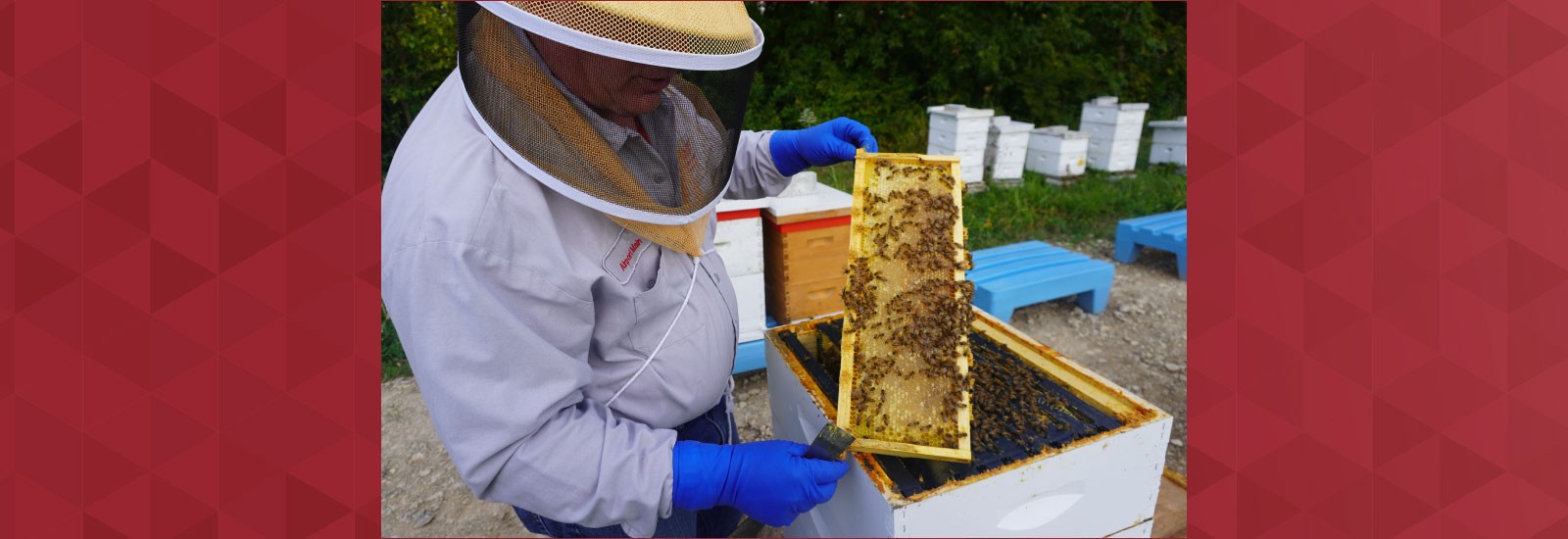When you’re fastening your seatbelt and putting your cellphone in airplane mode, looking out the window you might expect to see common airport sights such as empty stretches of grass, runways or other aircraft. However, the view at The Ohio State University Airport looks slightly different. In addition to standard landscape, there are two large apiaries, or collections of beehives, with several research attendants floating in and out of the scene.
Since 2014, the airport has partnered with the university’s Department of Entomology to study the foraging ecology of honeybees. The airport’s vast greenspace fields provide the perfect location for an apiary, and for studying how different landscapes support the pollinators through available foraging resources. Conveniently, the airport is less than a ten-minute drive for the Rothenbuhler Honey Bee Research Laboratory on Ohio State’s Columbus campus.
The research team is directed by Chia Lin, PhD, a research scientist at the bee lab located at Waterman Agricultural and Natural Resources Laboratory. She oversees the data collection process which includes participation opportunities for undergraduate and high school students. The hives at Waterman are monitored by machines that record weight change every hour, an important indicator of hive health. The team is conducting various experiments under changing conditions to investigate population dynamics, nectar collection and the impact of seasonal pesticides.
“I think the collaboration is definitely a good thing, and this has the potential to be, and to some extent already has been, replicated in other forms across different locations,” Lin said.
The airport has embraced its role as a living lab for the university. Dale Gelter, the assistant director of airport operations, interfaces with the research team and has seen the relationship between both sides grow stronger, especially during the past year.
“I’ve always loved honeybees, and this experience has allowed me to learn so much about the science behind them and what makes them tick,” Gelter said.
The research setup is unique because of its context. The apiary is in the middle of a city, yet has access to natural resources, making it a semi-natural habitat. Findings from these experiments could set the stage for future inquiry about urban sustainability, green infrastructure and what city crops could be used for bee foraging. Additionally, it provides the airport with a distinctive signature as both a transportation hub and a learning laboratory center.
Furthermore, the hive display draws public attention to the bees and serves as a reminder of the rapid rate of bee population decline in the wild. Lin hopes to one day add an observation hive in which researchers and travelers could watch the insects do their “waggle dances” that they perform to share information about the direction of nectar sources from the hive.
The funding for the new observation hive could come from the apiary’s honey generation. The honey creates more problems for the researchers than benefits because it takes up space that the queen could use to lay eggs, and larvae bees are the best candidates for studying. However, those involved have discussed potentially selling the honey and reinvesting the profits back into their research, buying updated equipment and expanding the project. Gelter has even proposed using it as a gift for the airport’s clients. This avenue paints an optimistic vision of the future for the airport, the lab, and most importantly, the bees.
Story by Aurora Ellis, student communications assistant
